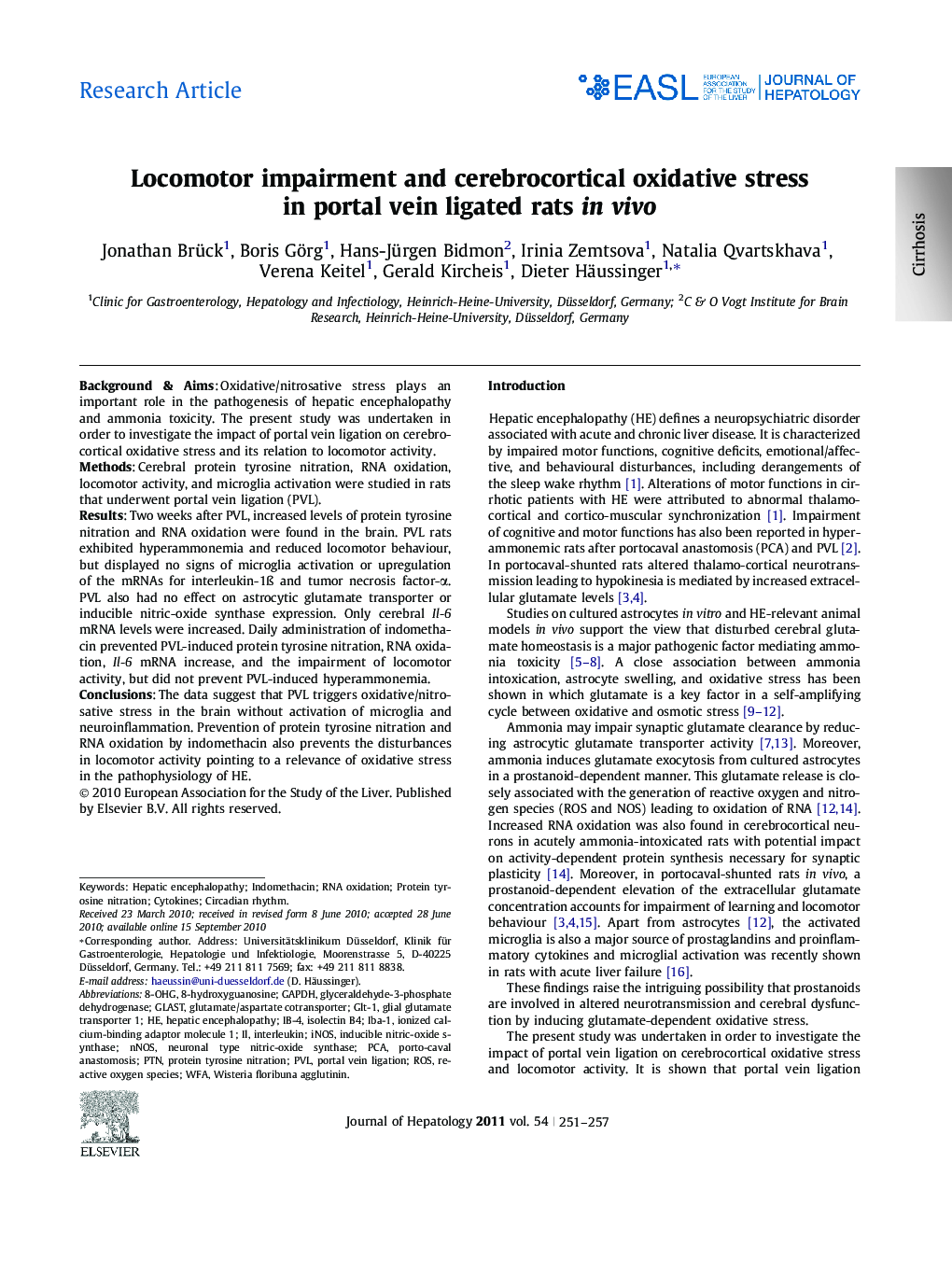| Article ID | Journal | Published Year | Pages | File Type |
|---|---|---|---|---|
| 6109053 | Journal of Hepatology | 2011 | 7 Pages |
Background & AimsOxidative/nitrosative stress plays an important role in the pathogenesis of hepatic encephalopathy and ammonia toxicity. The present study was undertaken in order to investigate the impact of portal vein ligation on cerebrocortical oxidative stress and its relation to locomotor activity.MethodsCerebral protein tyrosine nitration, RNA oxidation, locomotor activity, and microglia activation were studied in rats that underwent portal vein ligation (PVL).ResultsTwo weeks after PVL, increased levels of protein tyrosine nitration and RNA oxidation were found in the brain. PVL rats exhibited hyperammonemia and reduced locomotor behaviour, but displayed no signs of microglia activation or upregulation of the mRNAs for interleukin-1à and tumor necrosis factor-α. PVL also had no effect on astrocytic glutamate transporter or inducible nitric-oxide synthase expression. Only cerebral Il-6 mRNA levels were increased. Daily administration of indomethacin prevented PVL-induced protein tyrosine nitration, RNA oxidation, Il-6 mRNA increase, and the impairment of locomotor activity, but did not prevent PVL-induced hyperammonemia.ConclusionsThe data suggest that PVL triggers oxidative/nitrosative stress in the brain without activation of microglia and neuroinflammation. Prevention of protein tyrosine nitration and RNA oxidation by indomethacin also prevents the disturbances in locomotor activity pointing to a relevance of oxidative stress in the pathophysiology of HE.
